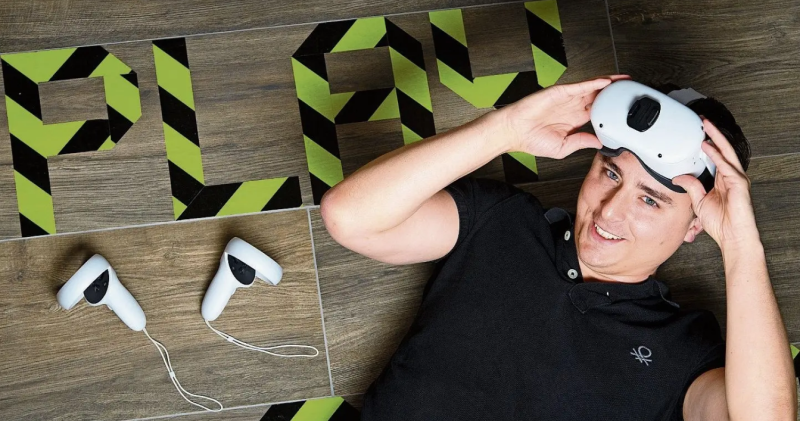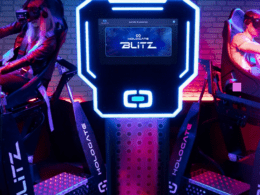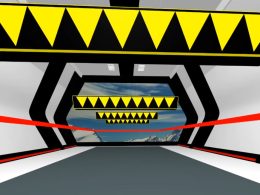The young Swiss entrepreneur Dennys Kuhnert creates virtual reality games for which you only need your fingers. He turns over millions with them.
Hands only: The 31-year-old Swiss developer invented a new kind of game in which one's own hands become controllers in VR. And landed a hit with it that turned over millions: The game called "Hand Physics Lab" has sold more than 200000 units since its release six months ago. "We are surprised at how well it has sold and is still selling far beyond our expectations," says Kuhnert.
Hand Physics Lab offers a magical gaming experience as you interact with your own hands instead of controllers. The interaction scheme has immense advantages: You always have your hands with you, and you don't have to learn how to use them. Both contributed to the success, Kuhnert says, the wow factor and the accessibility of the game.
Tricking perception with virtual fingers
Born in Lausanne, he studied neuro- and bioengineering at EPFL, a relatively new field of study at the interface of medicine and engineering that doesn't have much to do with game development. "I love technology, but I've also always had a creative streak. I wanted to combine the two things," says the young engineer.
Two years after completing his education, he and a fellow student founded the start-up Holonautic, with the aim of developing VR games. The first one appears in 2019 - and hardly brings in any money.
Play Jenga, crack a safe and be a bit of a Jedi Knight
Despite difficulties, he continued to experiment, and months later the research project becomes a demo that captivates tens of thousands of VR players. Kuhnert recognises the potential and decides to turn the idea into a real game. Then he succeeds in something that only a few studios manage: Holonautic is allowed to publish the VR game in the strictly curated App Store of the Oculus Quest 2.
The finished game will finally be released in April 2021. In it, players have to solve a variety of skill tasks and puzzles: Removing Jenga pieces without the tower collapsing, handling tools, cracking a safe or moving objects like a Jedi Knight using telekinesis - all with their own hands.
A sophisticated physics simulation ensures that the interactions not only look real, but also feel real. If you touch a virtual object with your virtual hand, resistance is simulated visually. This in turn simulates a tactile experience for the brain, even if in reality you only have air between your fingers: an amazing effect that shows how the brain fills in gaps in perception to create the most coherent "reality" possible.
No other VR game relies so heavily and so skilfully on hand tracking. The innovative game turned over more than 2 million Swiss francs within a very short time. "For a Swiss indie studio, this is more than just a respectable success, especially in the VR niche," says Oliver Miescher, who has accompanied and supported the independent Swiss developer scene for many years as part of the Pro Helvetia initiative Swiss Games.
Source: AZ









